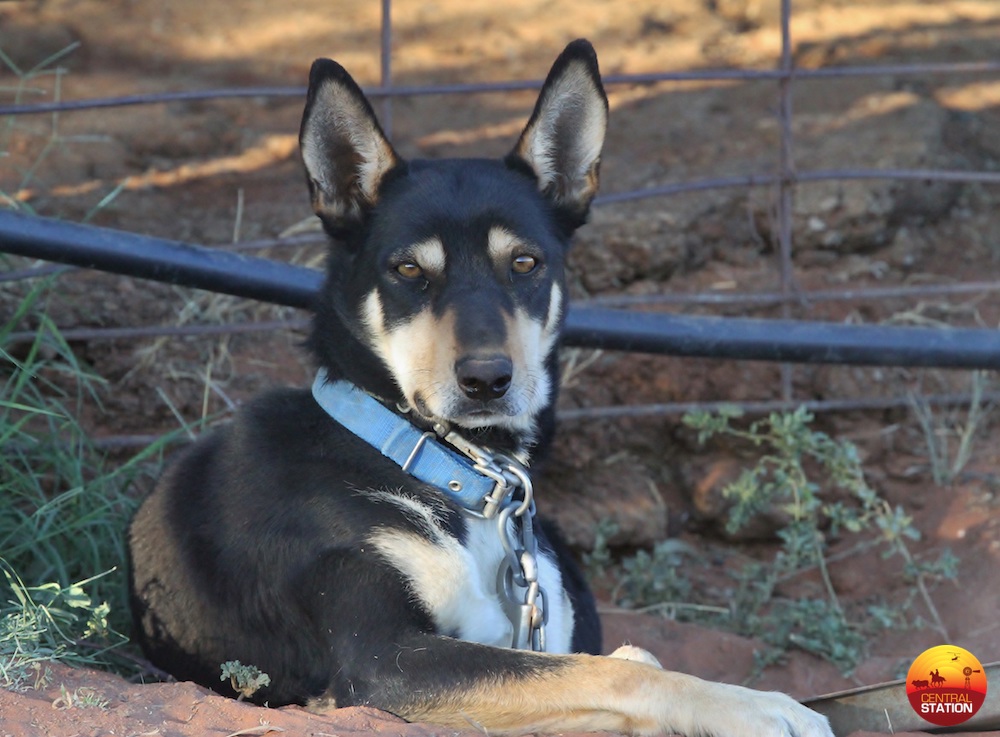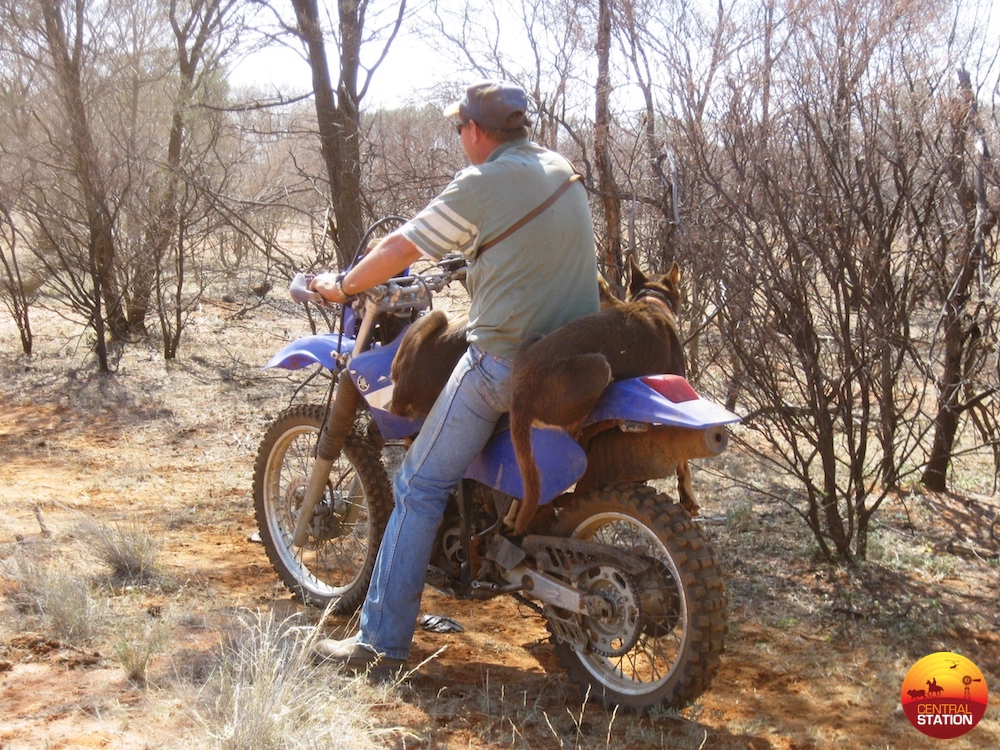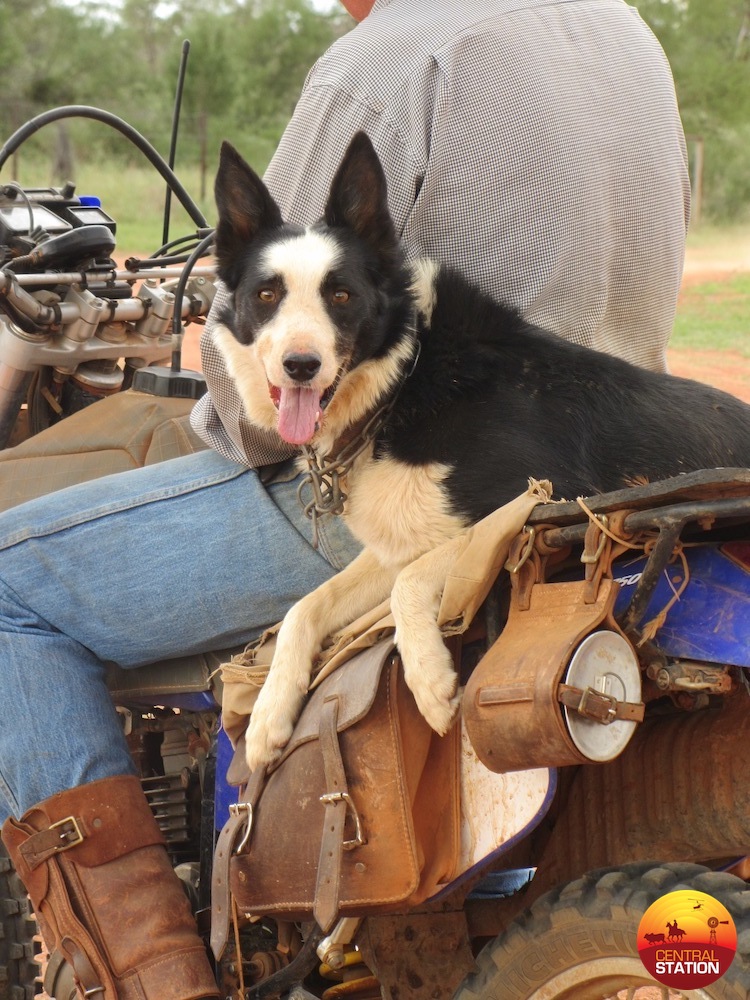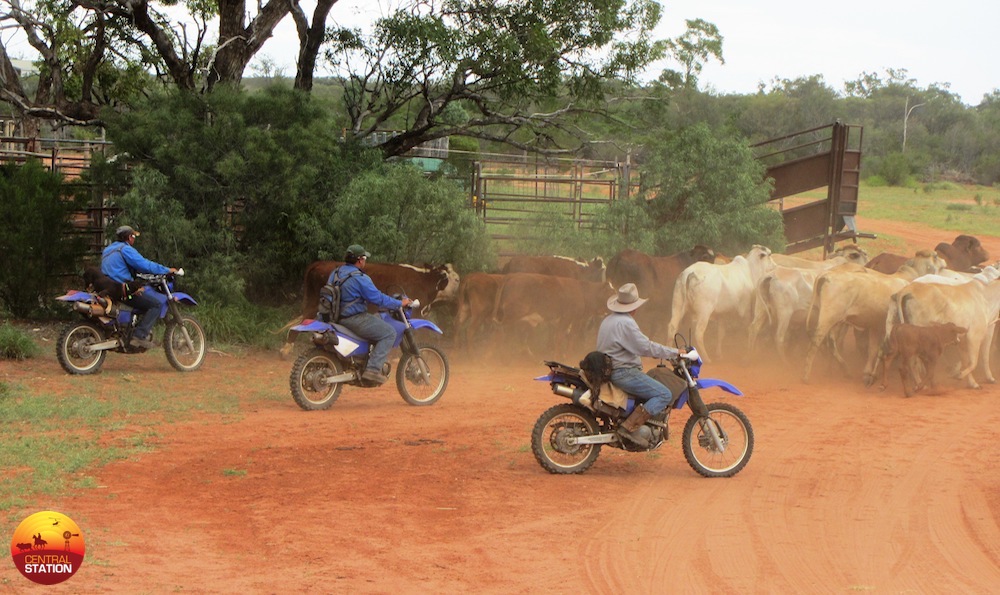Working dog yarns
Host: Kilcowera Station
Written by Toni Sherwin, Station Owner
Kilcowera is a working cattle station that offers accommodation, camping and guided tours.
Hi! I’m Toni, one half of the Sherwin partnership. I’m the one who does all the writing, banking, officey things and knows how to fix the computer, printer or internet when something goes pear shaped. (You just turn it off and then turn it back on and hope for the best!) Over the next week or so I’m going to share with you some aspects of station life that you may never have thought of and a few things that you may be more familiar with like dogs and poddies. So let’s start the ball rolling with some working dog yarns from Kilcowera of course!
Quite a few years ago we found a top bloke who did contract mustering. After years of just about begging blokes to come and work for us for a few weeks we had found a man who would organise a whole mustering plant to arrive at Kilcowera and stay for a month or so and do all our mustering in one hit. Peter and his team were much appreciated.
 Kelpie working dog.
Kelpie working dog.
The first year he arrived with 2 other men, trucks, utes, horses, dogs and bikes. They took a fair bit of settling in as there were about 40 dogs that had to be tied up, fed and watered. The horses were not actually going to be used on Kilcowera but they were part of Peter’s plant and went everywhere he went. Our cattle had not seen anyone on a horse for many years and would run a mile at the sight.
The mustering started next day and each man is on his bike with 2 dogs on the back. Now some of these dogs were very good workers and others were either learners or useless. To witness the good ones doing their job is really fantastic but seeing the stupid dogs chase everything in sight including the cattle can bring out some of the most colourful and descriptive language ever heard.
 Mustering with 2 dogs.
Mustering with 2 dogs.
This day we were out on the National Park next door trying to get some of our cows back, there were also some pretty wild, feral cattle in amongst them making the job that much more challenging. One of the fellas, John, had picked up some likely looking dogs from the local pound in Bourke and had one of these with him and the other fellow Roger also had some untried hounds. We were trying to get the cattle together and there were dogs running under them and through them, chasing roos and generally getting in the way of the few good dogs. I believe there was a lot of language floating about along with the bellowing of the cattle and the revving of the motorbikes and a few yelps as the dogs were eventually brought under some sort of control. It was very entertaining! Unbeknownst to us there were a group of tourists nearby who had been attracted by all this unaccountable noise going on in the National Park. After they made themselves known to the men one tourist admiringly said “What a wonderful display of dog handling and stockmanship!”
Now you might wonder why they needed so many dogs, but the attrition rate is pretty high for the dishlickers. If a dog is running around after cattle for half a day that’s just about enough for most of them, so you need to change dogs if you are working all day. The dogs do get lifts on the motor bikes so they are not on their paws all the time. They can be kicked by a beast, run over by a bike or car, fight amongst themselves, get heat exhaustion or just run the pads clean off their paws. But the good ones love to work. Those who are left behind in the mornings howl for hours at their misfortune at not being chosen.
 Baldie the dog.
Baldie the dog.
There were kelpies, blue and red cattle dogs, border collies, coolies and mutts. Some like the cattle dogs were only used when a hard biter was needed to control the more aggressive cattle. Others were used as lead dogs to steady the mob down and then some dogs were all rounders. And some were just a waste of space.
I remember once we were mustering a mob down a creek, the cattle had a long string on them, probably 3 kilometres from the lead to the tail, the men had no hope of getting to the lead to slow the cattle down due to the rough terrain. So this little black dog was sent to go to the lead. I was in the plane up the front trying to steady the lead myself so was able to watch this little dog gallantly and intelligently run past all these cattle until it got to the lead and blocked the cattle up. One little dog blocked up about 90 hot and bothered cattle and kept them there until the men could catch up.
Another episode involved Rollie, Greg’s best dog at the time. He was quite a well bred, long haired, border collie that came to us as a fat little puppy in the summer time. Well he was so cute he was spoiled and allowed to live in the house yard while he was small. He would just mooch around the place and go for a swim in his water dish every time he got hot. When he started digging up the garden and eating the seedlings, socks and shoes he outlived his welcome and was put out of the yard to live outside. Well he went around and round the fence for 3 days trying to get back in, crying all the time. He was pathetic.
As the months went by he learned how to ride on the back of the motorbike and was introduced to cattle and work even though he was usually kept on a long lead so Greg could get him back. He was so exuberant, so much energy and personality and still cute too. On one of his first forays of his working life we had gotten a mob of cattle together at the southern end of the paddock ready to take them to the yards in the northern end, about 6 kms away. Greg made the mistake of taking the lead off for a minute to untangle him from a tree. That was all Rollie needed, he joyfully took off after the cattle and stayed behind them for the whole 6 kms as they galloped across the paddock. Greg was yelling at the dog to come back and riding behind him to try and get hold of him and that only made the cattle and Rollie go faster. A man up the other end of the paddock heard all the commotion and saw the cloud of dust coming but had no idea what was going on til he saw Rollie hard on the heels of the cattle. He called up on the UHF radio, “Has this little black and white fluffy dog got an off button?” At that stage he didn’t.
The dogs can be wonderful and nearly always make the job easier. A good dog is easily as good as having another man most times. But they can be vexing as well.
 Yarding up cattle.
Yarding up cattle.
